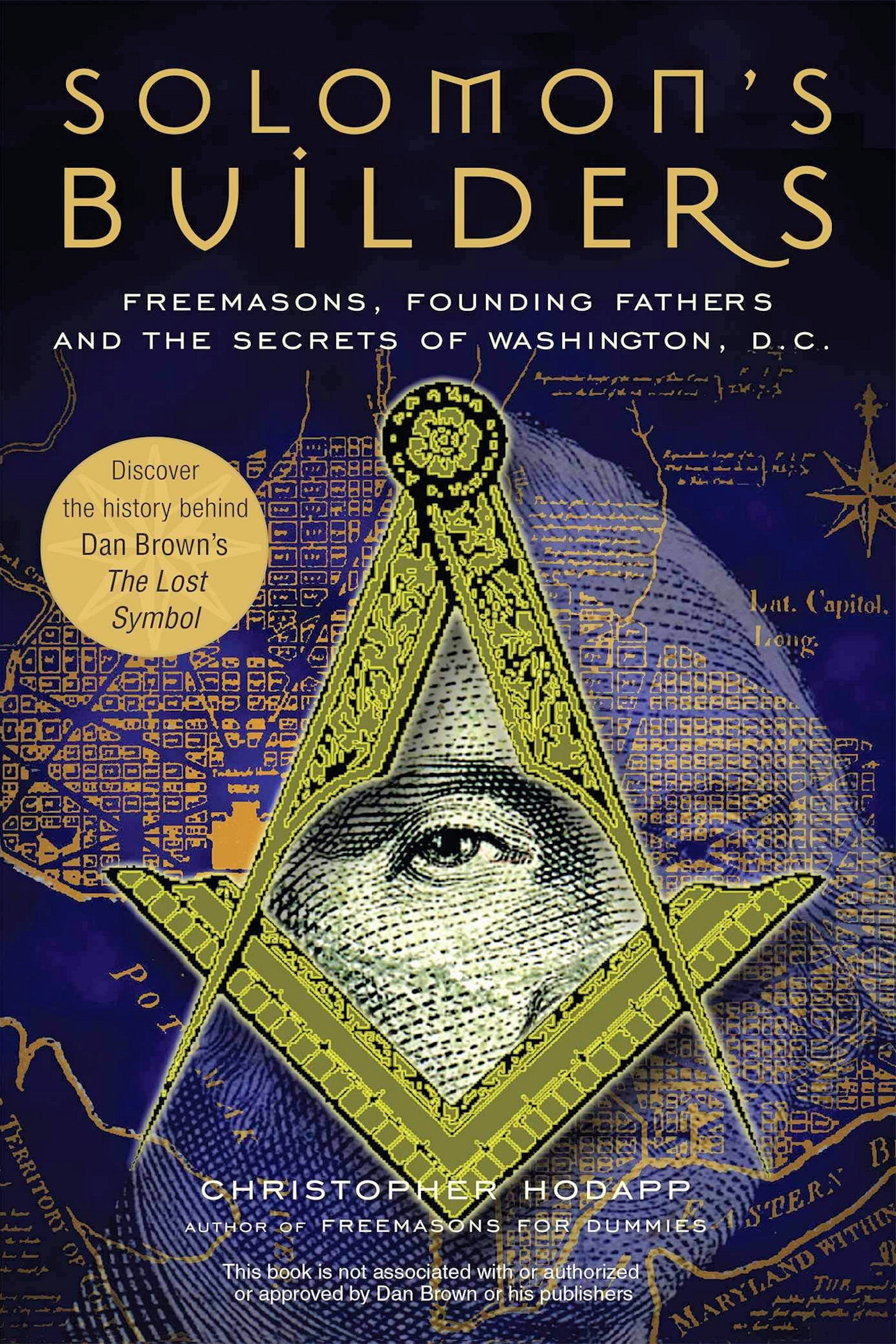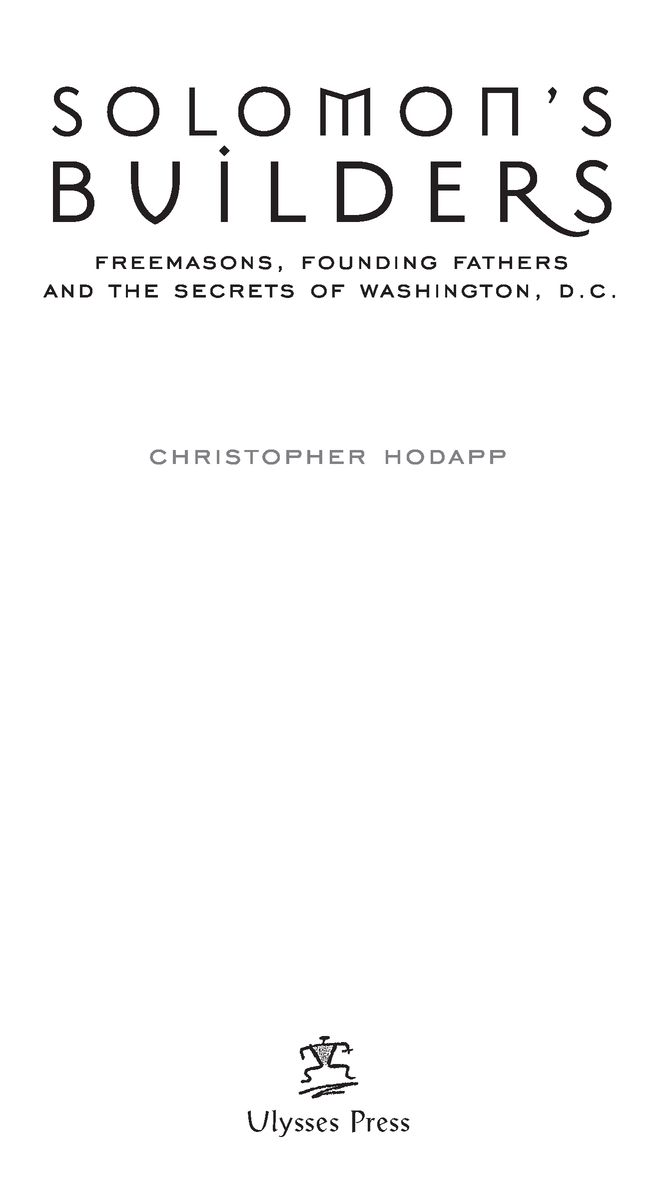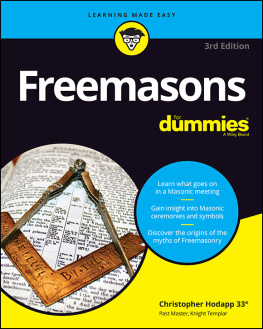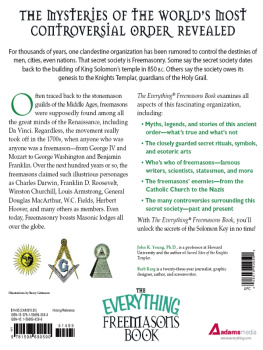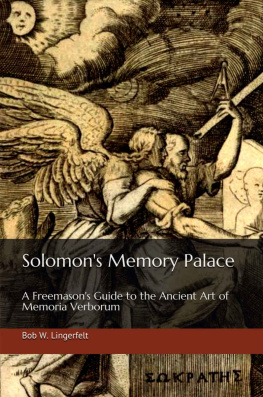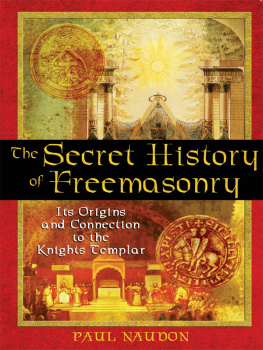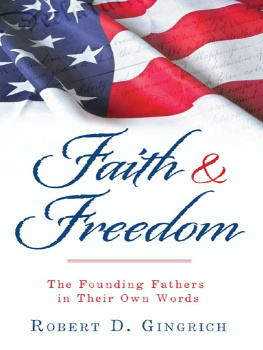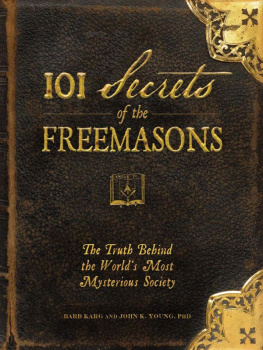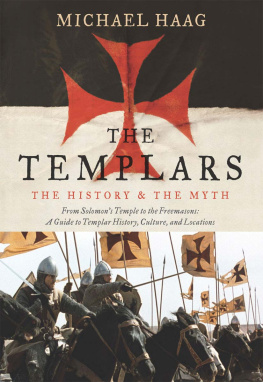Table of Contents
For Alice, my own Sophia.
Acknowledgments
This book would not have been possible without the enduring excitement and tireless assistance of my wife, Alice. It is her love of history that has been the engine pushing me to completion.
I am indebted to Mark A. Tabbert of the George Washington Masonic National Memorial for his friendship and his assistance; to Daniel Thompson, secretary of Fredericksburg Lodge No. 4, for his kindness and generosity; and to the Grand Lodge Free and Accepted Masons of the District of Columbia for their warm welcome and kind hospitality with absolutely no prior notice.
To Michael Segall, Michel Singer, Philippe Benhamou and other French brethren who assisted in my quest for information about French Masonry before and after their own revolution.
To the incredible on-line resources of Paul M. Bessel, Gary Dryfoos, Phoenixmasonry, and especially the Grand Lodge of British Columbia and YukonMasonic brethren who labor long and tirelessly in obscurity and whose efforts are of incalculable value.
To Nathan Brindle, Stephen Dafoe, Eric Schmitz, Jeff Naylor, Jim Dillman and the other Knights of the North for their encouragement and their assistance. And to the brethren of Broad Ripple Lodge No. 643 and Lodge Vitruvian No. 767 for their friendship and their understanding during a very hectic year.
To Nick Denton-Brown, Richard Harris, Claire Chun and everyone at Ulysses Press who took part in proposing this project and working long, last-minute hours to get it to press. Thank you all for your support.
Finally, I must publicly thank Dan Brown. Consciously or not, it is his work that has kindled new interest in institutions the world had forgotten about for a long time, and given those of us who still believe in them a new chance to tell their story.
Authors Note
When Dan Brown published The Da Vinci Code in 2003, I suspect he had no idea that it would sell 61 million copies in three years and become a worldwide phenomenon. Sitting down at the computer to write the sequel to the eighth best-selling book in publishing history is, I am guessing, a daunting, if not terrifying, task.
Brown left clues on the dustjacket of The Da Vinci Code as to what his next book would be about. The biggest involved spotting certain letters in the books inner flap that were printed darker than the others. Written out in order, they spelled a curious phrase: Is there no help for the widows son? But one group around the world understood the message clearlythe ancient fraternity of Free and Accepted Masons. So it would seem the most eagerly anticipated sequel in modern historybelieved to be titled The Solomon Keyis going to be about the Freemasons. Further, in an interview shortly after The Da Vinci Codes publication, Brown himself said that the sequel would take place in Washington, D.C., and even held a contest on his website for fans to decipher other clues on the cover of the original book.
The world is still awaiting Browns sequel, and several anticipated publishing dates have come and gone while Brown has dealt with a famous lawsuit and a big-budget movie. During the delay, the film National Treasure (2004) and novels like Brad Meltzers Book of Fate, along with scores of books, articles and television shows seeking to out-think Browns unpublished plot, have all touched on similar subjects.
In spite of the worldwide mania over topics Brown covered in his previous books, he is above all a novelist. The supposed facts that come from the mouths of his characters are frequently not true, in spite of his contention to the contrary. Browns previous book Angels and Demons dealt with the Illuminati, a group that has often been erroneously tied to the Freemasons, ever since its short lifespan in Europe during the late 1700s. Thats what writing fiction is all about, and Brown does spin a good yarn. But I suspect the Vatican, Opus Dei, and the National Organization for Albinism and Hypo-pigmentation are less than enthused by the liberties he has taken with facts. Similarly, Freemasons are nervous.
Solomons Builders was not written to second-guess Browns sequel, but to separate the truth from the fiction about the real Freemasons who were present at the birth of the United States, and the reality behind the building of Washington, D.C. Myths, legends and conspiracy theories have existed about the Masonic involvement in the history of the United States ever since the end of the American Revolution. This book is designed to give the reader the real story, before it gets lost in Solomon Key mania. There are no plot spoilers here, since no one knows what Brown has written until it lands in bookstores. But when you curl up in your comfy chair to read his undoubtedly exciting sequel, you will at least be armed with the truth ahead of time.
Christopher L. Hodapp
November 2006
Introduction
Open your wallet and with any luck youll find a $1 bill there. Take it out and look at it closely, maybe for the first time. You hold in your hand more than just a sheet of paper with limited buying power. It is a connection to more than two centuries of history. Look into the eyes of George Washington. His portrait is a commemoration of a decade of struggle and revolution; of the leadership of a man who was at one time venerated, in the words of Thomas Jefferson, as a demigod; of the founding of a great experiment in government in which the modern world of its day had neither experience nor confidence. And you hold a tiny connection with something else you have probably never thought ofthe worlds largest, oldest and most famous secret society, the fraternity of the Freemasons.
Turn the bill over and look at the many strange symbols on the back. Everyone knows that the pyramid and the all-seeing eye are Masonic symbols... right? Its all over the Internet. Entire books have been written about it. In the first two minutes of the 2004 film National Treasure, kindly, old Christopher Plummer tells his grandson that the Masons put it there as a clue to a vast and ancient treasure. The film is a work of fiction, but those curious clues remain, and even people who dont know what a Freemason is will tell you in solemn tones that they are Masonic symbols. But are they really?
There are other puzzles and clues in Washington, D.C. The plan of the city, designed by Pierre LEnfant, is a tantalizing grid of horizontals, perpendiculars, diagonals and circles. Stare at them long enough, and patterns emerge. Five-pointed stars or pentacles. Right angles. Squares. Maybe even a compass. Just like the symbol of the Freemasons.
When you look at the monuments and buildings of Washington, D.C., and begin to dig deeper into the historical origins of the city and our nation, you find Freemasons everywhere. They are presidents, generals, builders, dreamers, diplomats, scientists, patriots and, occasionally, traitors.
Those of us who first got our childhood glimpses of science, logic and philosophy from watching

